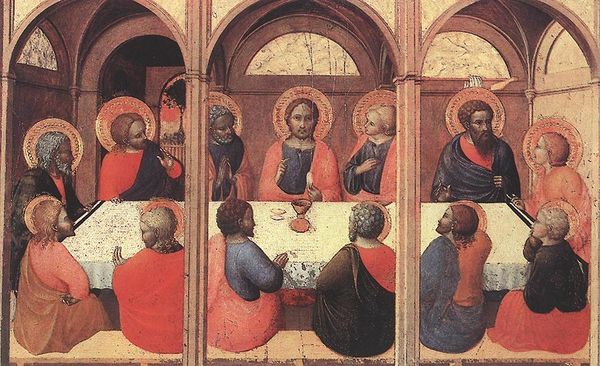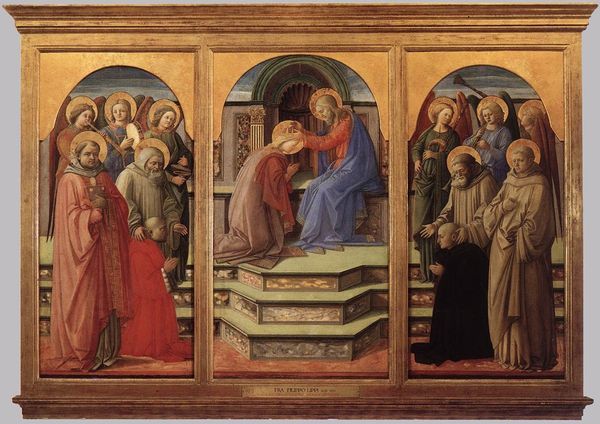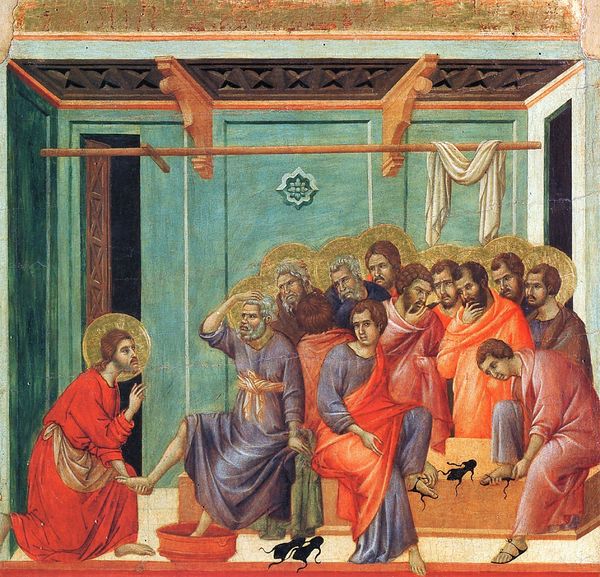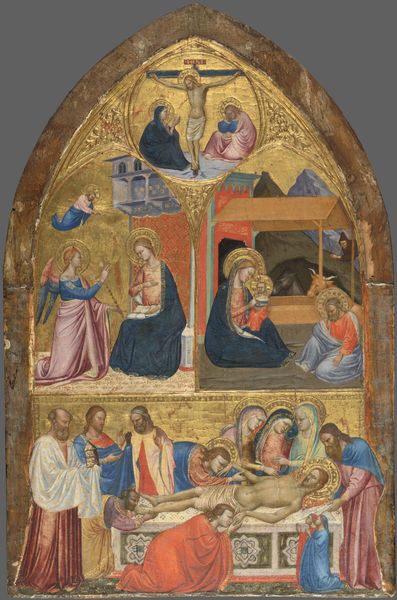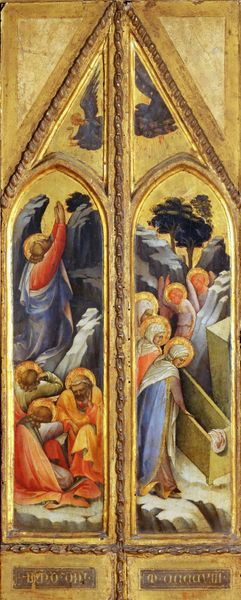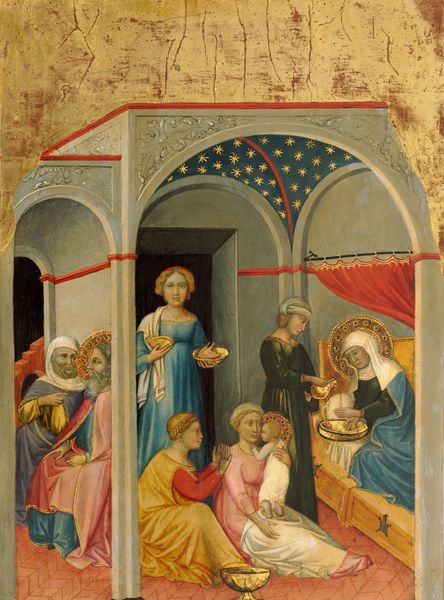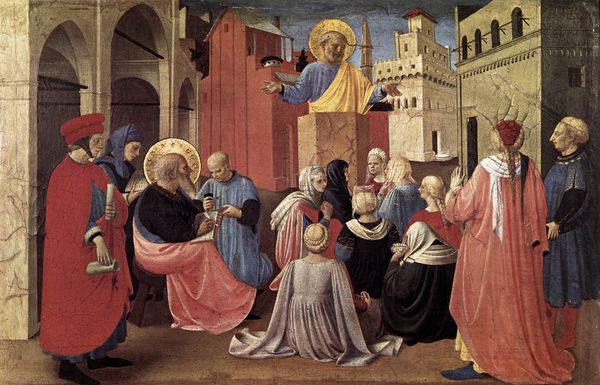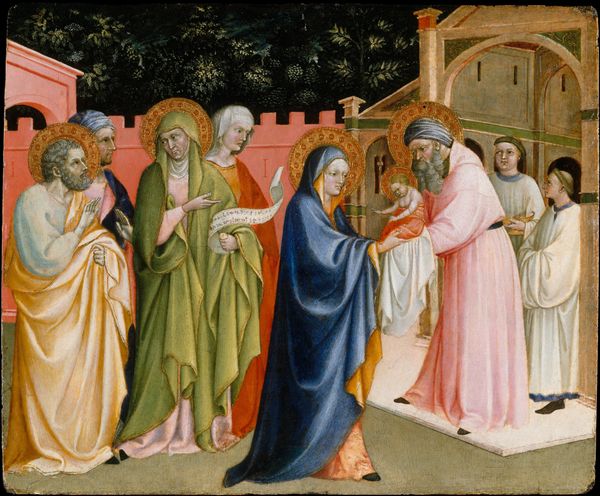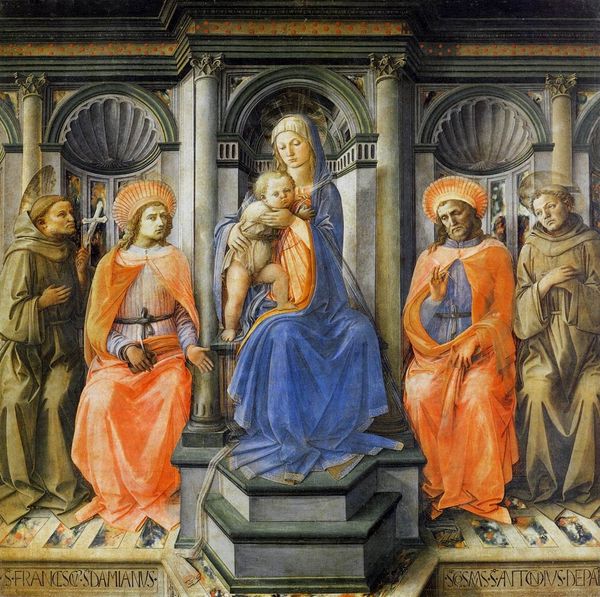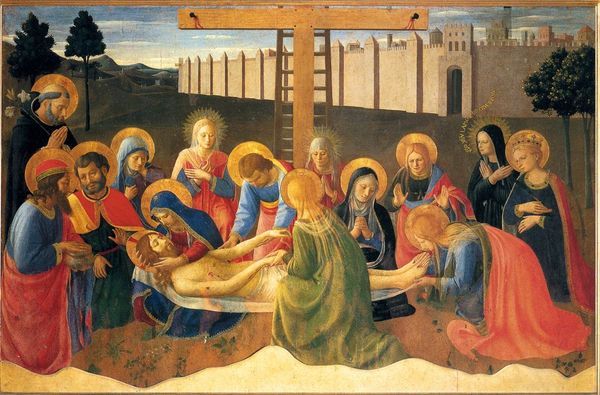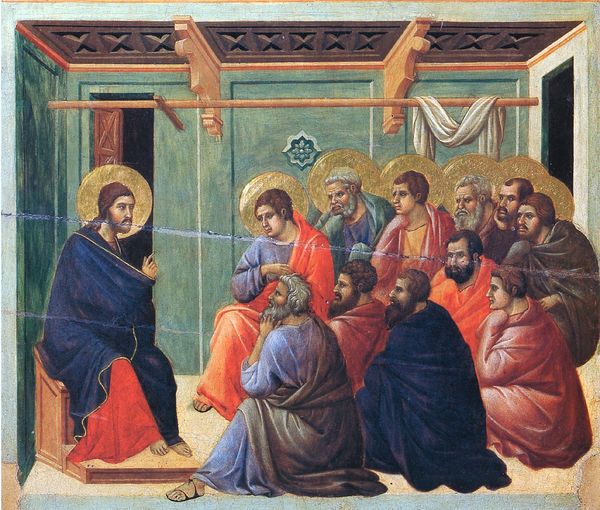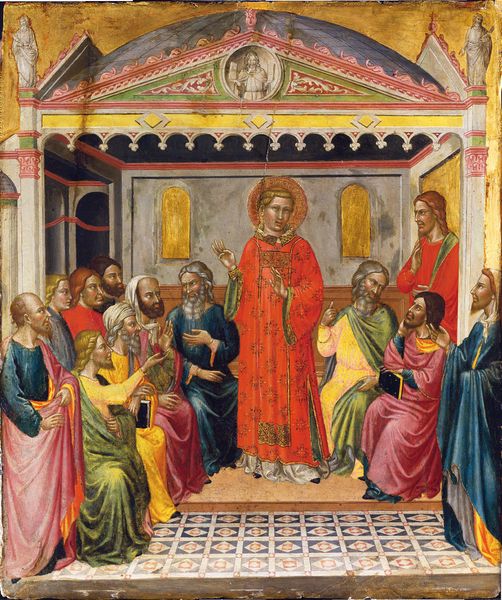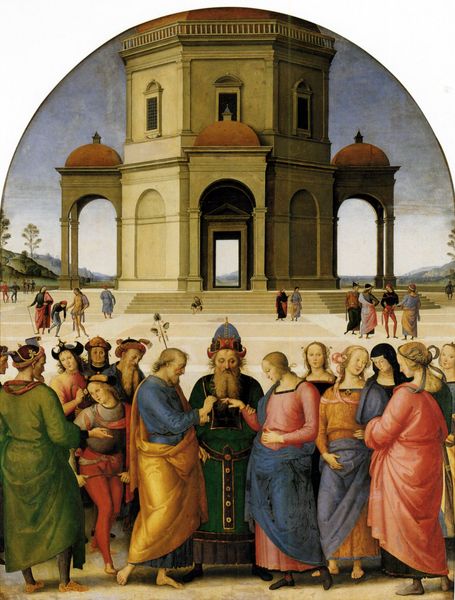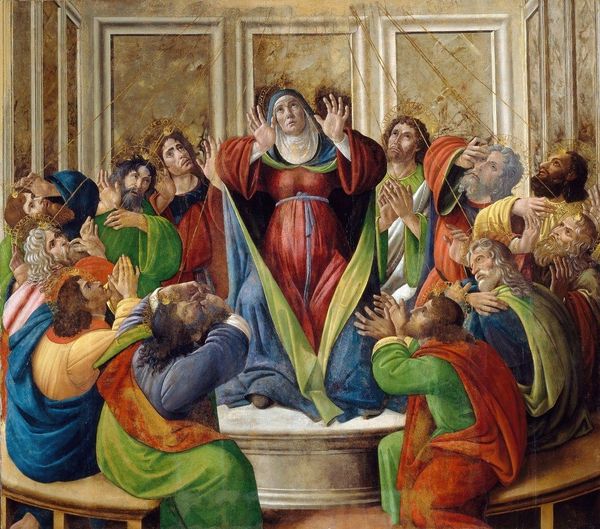
painting, oil-paint, fresco
#
portrait
#
narrative-art
#
painting
#
oil-paint
#
figuration
#
fresco
#
oil painting
#
jesus-christ
#
group-portraits
#
christianity
#
painting painterly
#
history-painting
#
italian-renaissance
#
early-renaissance
Dimensions: 38.5 x 37 cm
Copyright: Public domain
Curator: Right now, we are standing in front of Fra Angelico's "Communion of the Apostles," a fresco completed around 1452, here in the Basilica di San Marco in Florence. Editor: Immediately, what strikes me is the hushed reverence of it all. It's both formal and strangely intimate. The limited palette adds to that contemplative mood, doesn't it? It almost feels like we are eavesdropping on something sacred. Curator: The architectural framing creates this interesting push and pull between enclosure and exposure. Notice how the columns both define and open up the space? And, look, the script along the top and bottom act as a visual echo to this spatial arrangement. Editor: Those columns… they remind me of how religious spaces are designed to direct our gaze upwards, toward the heavens. And in terms of symbols, beyond the obvious, the apostles are all unique, aren’t they? Curator: Angelico really strives for that sense of individual character, doesn't he? Each figure has their own response to this moment, from prayerful contemplation to devout reception. It really grounds the scene. Also, you might observe that the offering of the Eucharist isn’t coming from Christ, but rather from an assistant! Editor: That humanizes the divine ritual. The light, too. It’s subtle but definite. It softens those harder edges you might find in other frescoes of the period. Light as an iconographic vehicle of divine grace? Curator: Precisely! It's less about grand pronouncements and more about quiet moments of transformation, which leads me back to this overall mood: the gentleness of light and the softness in the poses really capture this moment of holy initiation. Editor: Yes, Fra Angelico turns that divine encounter inward. It's a shared spiritual space of symbolic communion. Curator: What a journey of spirit and image, as we contemplate that pivotal meeting of divine presence and sacred tradition. Editor: And how such depictions of shared spirit continue to mold communal identity over long stretches of time.
Comments
No comments
Be the first to comment and join the conversation on the ultimate creative platform.
